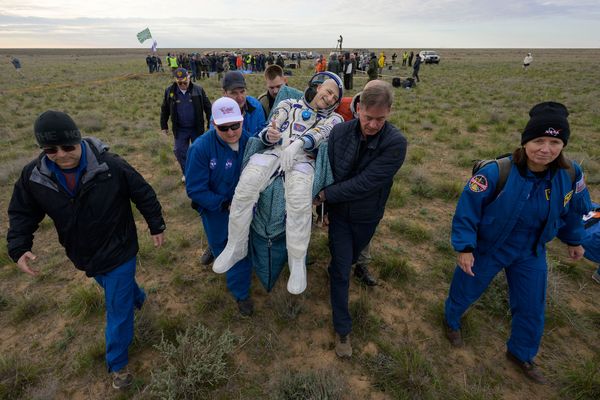
A Monaco Grand Prix in dry conditions most often is a straightforward affair.
In modern Formula 1, if you manage to top qualifying in the principality, then the road to victory looks uncomplicated: get a decent getaway to lead at Turn 1 (not the hardest thing to do, with just over 200m to go from pole position), and make sure you don’t get undercut – or overcut – by your rivals.
The race often turns into a waiting game, as the leader waits for his nearest rival to pit before doing likewise on the next lap.
In this context, F1’s move to impose multiple-pitstop strategies in Monaco – with the number of mandatory tyre changes and compounds yet to be defined – is a fair attempt at improving what has too often been described as a procession.
For the sake of simplicity, F1 rules are usually described as mandating a pitstop for every driver, but the real regulation is that every competitor must use at least two different tyre compounds in dry-weather races.
This nuance is key, because tyre changes are allowed under red-flag conditions. So, when the 2024 Monaco Grand Prix was interrupted following a lap-one pile-up involving Nico Hulkenberg, Sergio Perez and Kevin Magnussen, home hero Charles Leclerc just had to withstand pressure from Oscar Piastri throughout the race, after both drivers switched from the medium to the hard compound for the last 77 laps of the contest – and the Monegasque did so easily.

“That was a tricky race. The pace at the beginning was incredibly slow. I had half a look before the tunnel but didn’t have a car small enough to fit through the gap,” Piastri said at the time.
This has been another issue of late: F1 cars were made wider as part of the 2017 technical regulations, from 1.80 to 2 meters. On the narrowest and most winding track of the calendar, this is a major obstacle to overtaking.
“It's just one of these tracks where it's very hard to pass,” four-time champion Max Verstappen admitted. “And of course, the bigger we make the cars, the more difficult it is also to race. I felt like in like 2016 there was still a little bit of an opportunity. Now that's, of course, gone.”
The 2024 race featured seven overtaking moves (lap 1 excluded) – including three by Valtteri Bottas and two by Lance Stroll – but none whatsoever in the top 10, where the order didn’t change a single time after the early red flag.
The 2023 and 2022 events were somewhat eventful thanks to rain spicing things up, but not a single overtake was completed in the 2021 contest, run on a fully dry track. Bottas had his infamous 43-hour pitstop while running second, and Verstappen easily saw off the Carlos Sainz threat behind him thanks to the eight-second gap when the Spaniard pitted.

That is not to say that Monaco was the scene of overtake frenzy pre-2017, but there is a problem to solve.
That’s why it was a major issue on the agenda of the F1 Commission meeting that took place ahead of the F1 75 launch in London on Tuesday, where it was agreed to mandate multiple pitstops for the 2025 contest – possibly using all three tyre compounds brought to the principality by Pirelli. These will most likely include the new-for-2025 C6 rubber, which theoretically is even softer than the other compounds.
“Saturday determines everything,” Red Bull team principal Christian Horner said. “Last year highlighted that if you do have a stoppage and you can change your tyres at that stoppage, it's end of race, basically – it's a procession.
“So, stating that you have to run all three compounds… I think that by introducing two stops, it at least adds another dynamic. And then if it rains, you’d still have to do two stops.
“It's a little artificial, but it does add another dynamic, another possibility for Monaco to move away from [being] a very stagnant, boring race that it can often be.”

The extra pitstops will admittedly reduce tyre wear even more, but degradation normally isn’t a substantial enough factor to allow for overtaking in Monaco, unless rain comes along and someone ends up on a drying track with worn-out intermediates – but even then, an overtake will potentially require a bold move on a wet part of the track.
The new strategies can be expected to breathe some much-needed life into the Monaco race. Drivers would have pushed more last year, knowing that they didn’t have to save tyres – that’s already a huge bonus, as the early lap times were more than ten seconds off pole position.
Casual viewers won’t notice the difference when cars are a couple of seconds slower, but they certainly do when those cars don’t even outperform their Formula 2 counterparts’ qualifying pace. Richard Verschoor set the F2 pole position in 1:21.283s in 2024; Charles Leclerc lapped in 1:21.515 on average from laps 4-8 of the F1 race after an even slower start, before his times gradually improved down to the 1m15s bracket by the late stages of the contest. He had set pole with a 1:10.270s on Saturday.

From a strategic point of view, those pitstops would have allowed Piastri and McLaren to try and outfox Leclerc and Ferrari in their fight for victory. One could imagine, in a regular, uninterrupted race, both would start on mediums still – getting a more decent launch off the line than with hards, while avoiding a soft-induced premature first pitstop that might drop them into traffic.
The low tyre degradation also means the overcut may be a viable strategy as a slightly worn-out tyres may outperform cold ones, and the race leader could be in trouble if his closest challengers are team-mates and go separate ways – one trying the undercut, the other the overcut. This will largely depend on how the Pirelli rubber reacts to the conditions on the day, but the race will be enhanced with a layer of unpredictability.
Not everyone cares so much about the decision to mandate those extra pitstops, with a jaded Verstappen grumbling: “I don't know if it's going to make a massive difference or whatever, but I don't mind, honestly, if it's one stop, two stops, 25 stops. It's all fine. I mean, I do whatever is, is decided, right?”
At least the near-century-old race, created in 1929 when cars weren’t nearly as bulky as they are today, gets some essential revitalization.








